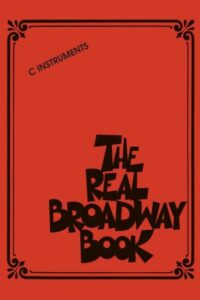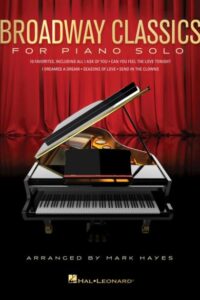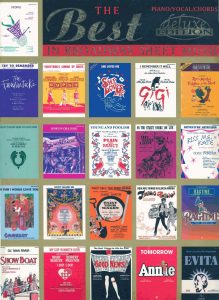Come join us now, and enjoy playing your beloved music and browse through great scores of every level and styles!
Can’t find the songbook you’re looking for? Please, email us at: sheetmusiclibrarypdf@gmail.com We’d like to help you!
Table of Contents
Nat King Cole plays the piano (and sings) on the Ed Sullivan‘s Show (1954)

Nat King Cole “This Can’t Be Love” on The Ed Sullivan Show on May 16, 1954

Best Sheet Music download from our Library.

Please, subscribe to our Library.
If you are already a subscriber, please, check our NEW SCORES’ page every month for new sheet music. THANK YOU!
The Ed Sullivan Show: A Cultural Landmark in American Entertainment
Introduction
Few television programs in the 20th century left as indelible a mark on popular culture as The Ed Sullivan Show. Airing on CBS from 1948 to 1971, it became one of the longest-running and most influential variety shows in television history. Hosted by Ed Sullivan, a newspaper columnist turned TV personality, the show offered a weekly stage where music, comedy, theater, dance, and novelty acts could reach a national audience. For more than two decades, it functioned as both a showcase for established artists and a launchpad for emerging talents, profoundly shaping American entertainment.

Origins and History
The program debuted on June 20, 1948, originally titled Toast of the Town. By 1955, its name was officially changed to The Ed Sullivan Show, reflecting its host’s central role. Sullivan, though often described as awkward and stiff on stage, possessed an extraordinary talent for spotting talent and gauging public taste.
The show aired on Sunday nights at 8 p.m.—a prime family viewing time. For 23 years, households across America would tune in, making it a national ritual. At its peak, it drew audiences of more than 50 million viewers, an astounding figure in the pre-cable, pre-internet era.

Style and Format
Unlike later late-night talk shows or strictly musical programs, The Ed Sullivan Show was a variety show in the truest sense. Each broadcast featured a wide assortment of acts, including:
- Popular music performances (pop, rock, jazz, country, classical)
- Comedy sketches
- Broadway musical numbers
- Opera and ballet excerpts
- Circus and novelty acts (jugglers, acrobats, ventriloquists)
This eclectic mix reflected Sullivan’s belief that television should cater to all audiences. His signature introduction—“And now, ladies and gentlemen…”—set the tone for an evening of unpredictable entertainment.
Sullivan himself was not a polished performer; his delivery was famously wooden, and his gestures awkward. Yet this stiffness paradoxically added to his charm, making him a reliable guide through the diverse acts.
Featured Artists and Breakthrough Moments
The show became legendary for introducing groundbreaking artists to American audiences:
- Elvis Presley (1956–1957): His appearances—though shot from the waist up due to concerns about suggestive dancing—were explosive cultural moments, cementing Elvis as the “King of Rock ’n’ Roll.”
- The Beatles (1964): Their U.S. debut on The Ed Sullivan Show was watched by over 73 million viewers, an event that launched the “British Invasion” and transformed the music industry.
- The Supremes, The Jackson 5, and Motown artists: The show gave national exposure to Black performers during the Civil Rights era, helping to integrate popular culture.
- Comedy stars: Comedians like Richard Pryor, Joan Rivers, Rodney Dangerfield, and George Carlin made early appearances.
- Broadway musicals: Excerpts from My Fair Lady, West Side Story, and Camelot brought Broadway to living rooms across America.
- Specialty acts: Puppeteer Topo Gigio (an Italian mouse puppet), acrobats, and magicians contributed to the program’s whimsical spirit.
Cultural Impact and Interests
The show was more than entertainment; it was a cultural barometer:
- Family-Friendly Appeal: By offering a mix of acts, it bridged generations, making it suitable for children, parents, and grandparents alike.
- Cross-Cultural Exposure: Sullivan believed in diversity. He frequently booked African American performers at a time when segregation still shaped much of American life, giving them equal billing with white stars.
- National Integration of Pop Culture: In an era before widespread touring and mass media fragmentation, the show allowed millions to experience the same artists at the same time, creating collective cultural moments.
- Launching Careers: For many performers, appearing on The Ed Sullivan Show was a career milestone, marking their transition from regional success to national fame.
Decline and Legacy
By the late 1960s, television tastes began to change. Audiences gravitated toward sitcoms, more specialized music shows, and edgier programming. Though Sullivan continued to book major acts, the format started to feel outdated. In 1971, after 1,068 episodes, CBS canceled the show.
Yet its legacy is immense:
- It helped define television’s golden age.
- It was a cultural equalizer, blending highbrow and lowbrow entertainment.
- It provided a platform for generational icons, from Elvis to The Beatles to The Rolling Stones.
- Its archival footage continues to be a treasure trove for historians and music lovers.
The Ed Sullivan Show was far more than a television program—it was an institution. Ed Sullivan himself may not have been a charismatic entertainer, but his instincts and vision created one of the most important stages in entertainment history. By mixing opera with rock ’n’ roll, ballet with comedy, and Broadway with novelty acts, Sullivan ensured his show represented the full spectrum of American and global talent. For over two decades, Sunday nights in America meant gathering around the television set for a parade of culture, entertainment, and history in the making.
Browse in the Library:
Or browse in the categories menus & download the Library Catalog PDF:
Timeline of Iconic Performances on The Ed Sullivan Show
1948–1950s: Establishing the Stage
- 1948 (Debut Year): Toast of the Town premieres with Dean Martin and Jerry Lewis among the first performers, setting the tone for comedy and variety.
- 1950s: Opera stars like Maria Callas and classical musicians like Itzhak Perlman share the stage with comedians such as Milton Berle and Jack Benny. This blend defines the show’s “something for everyone” style.
- June 5, 1955: Bill Haley & His Comets perform “Rock Around the Clock,” signaling the arrival of rock ’n’ roll on national television.
1956–1957: The Elvis Presley Phenomenon
- September 9, 1956: Elvis Presley’s first appearance draws an audience of 60 million (82.6% of TV viewers). His gyrating dance moves shock conservative viewers but thrill teenagers.
- January 6, 1957: On his third appearance, Elvis is infamously filmed only from the waist up to avoid “suggestive” movements—cementing both controversy and stardom.
1960–1963: Broadway and Comedy Flourish
- Regular performances from Broadway musicals like West Side Story, Bye Bye Birdie, and Camelot bring New York theater into American homes.
- Comedians such as George Carlin, Richard Pryor, and Joan Rivers begin to appear, testing boundaries of humor.
- The show becomes a cultural meeting point for “family-friendly entertainment” during a period of social calm.
1964: The Beatles and the British Invasion
- February 9, 1964: The Beatles make their U.S. debut with “All My Loving,” “Till There Was You,” and “She Loves You.”
- Viewed by 73 million people, this performance is one of the most-watched TV events in history.
- Subsequent Beatles appearances on Sullivan accelerate the British Invasion, paving the way for acts like The Rolling Stones, The Animals, and The Dave Clark Five.
1965–1967: The Rock ’n’ Roll Explosion
- 1965: The Rolling Stones perform “(I Can’t Get No) Satisfaction,” shocking parents but delighting youth.
- 1966: The Supremes appear, becoming regular guests and introducing Motown’s polished sound to mainstream audiences.
- 1967: The Doors perform “Light My Fire.” After being asked to censor the word “higher,” Jim Morrison sings it anyway—causing backstage tension but cementing the band’s rebellious image.
- 1967: The Jackson 5 make their first national appearance, with a young Michael Jackson capturing hearts.
1968–1970: Social Change on Stage
- 1968: Comedian Richard Pryor performs edgy material, reflecting shifting cultural attitudes.
- 1969: Diana Ross & The Supremes’ farewell performance marks the end of an era in Motown.
- 1969: Elvis Presley returns for a televised comeback special on NBC, but Sullivan’s earlier shows are remembered as his true TV coronation.
- Folk musicians like Joan Baez and Peter, Paul & Mary appear, tying the show to the era’s social and political movements.
1971: The Final Curtain
- June 6, 1971: The last episode of The Ed Sullivan Show airs, ending a 23-year run. The final guests include Gladys Knight & The Pips, Jerry Vale, and retirements of several Broadway features.
- The program closes not with a bang but with a sense of having already made history.
Legacy of the Performances
Each of these moments became more than just entertainment—they were cultural milestones:
- Elvis and The Beatles redefined youth culture.
- Broadway acts democratized high art for middle America.
- Black artists like The Supremes, Jackson 5, and Motown greats helped mainstream African American music.
- Comedians tested boundaries, paving the way for modern stand-up.
Browse in the Library:
Or browse in the categories menus & download the Library Catalog PDF:
